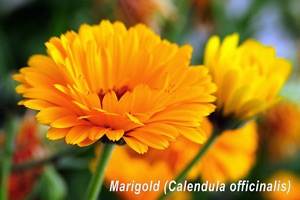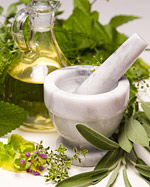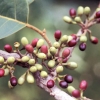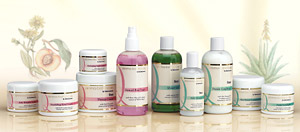Using Infused Oils In Aromatherapy
 In the modern, high-speed, hi-tech world of today, it can be reassuring to find that sometimes the old fashioned way of doing things is still the best.
In the modern, high-speed, hi-tech world of today, it can be reassuring to find that sometimes the old fashioned way of doing things is still the best.
Infused oils are a great example of this; they employ a time honored way of directly harnessing the natural healing properties of plants that in many ways has still yet to be surpassed in both efficacy and cost.
Also known as herbal, phytol or macerated oils, they are produced by a primitive method but are nonetheless highly effective, ready to use preparations that have been used as medicines by almost every civilization throughout the planet, right up to the 21st century.
They continue to be used today in herbal medicine and aromatherapy where we take full advantage of their wonderful health-giving properties and versatility. Their great versatility means that there is almost no end to the ways that you can use them in aromatherapy.
Infused oils can be applied undiluted to the skin to treat a wide range of conditions, or they can be added to other carrier oils for use in a massage. You can even add them to skincare creams to add extra nourishment and moisture to your skin.
What are infused oils?
An infused oil is a vegetable oil that contains the aromatic molecules of a plant or flower that has been steeped in it. Aromatic molecules are the essential oils and other important fat-soluble components from a plant or flower that constitutes its healing properties, which means that infused oils are ready-made massage oils containing essential oils that came directly from the plant, instead of through the process of distillation.
Infused oils are therefore not the same as carrier oils. A carrier oil is produced by pressing seeds or nuts (preferably without applying any heat) and yields what is classified as a ‘fixed’ or ‘vegetable’ oil. This resulting oil does not contain any essential oil from plant material; these are added later when you want to make an aromatherapy massage oil.
How they are made
The traditional method of making infused oils has changed very little in thousands of years. A plant or flower material such as marigold (Caledula officinalis) is cut into small pieces and put into a wide-necked glass jar, and then a suitable vegetable oil is added. Traditionally, sunflower or olive oil is preferred, but almond, apricot or peach oil may also be used.
The mixture is stirred and then placed into direct sunlight for up to 2 or 3 weeks. The jar is periodically turned to ensure the heat and light from the sun are distributed evenly across the soaking mixture. Eventually, the cells containing the precious essential oils begin to break down, and all the wonderful healing properties of the plant are infused into the oil.
Finally, the resulting mixture is filtered several times to remove the spent plant material and voila; a natural remedy containing all the active principles of the plant, pre-diluted and ready to use.
Infused oils in use
Calendula (which is derived from marigold flowers) and St John’s Wort are possibly the most popular infused oils used in aromatherapy since they are so versatile and effective, although recently some therapists have begun to discover the benefits of Arnica, Carrot, Comfrey and Lime Blossom as well. St Johns Wort has been in the news for some considerable time now since it has been marketed in capsule form as an unlicensed medicine for anxiety and depression.
However, in aromatherapy, it is applied externally only and is used for reducing discolouration on bumps and bruises as well as soothing hot, itchy and sensitive skin. If used after over-exposure to the sun, St Johns Wort helps to lower the temperature of the skin as well as delivering a moisturizing, soothing and comforting effect to the sunburn.
Miracle worker
Calendula oil is produced by macerating marigold flowers, and its healing properties are legendary. Use it to ease red, irritated and sensitive skin, or for maintaining joint mobility in later life.
Calendula works miracles on dry and chapped hands that have been subjected to abuse whilst washing-up or gardening, and when used as a night treatment it is effective for reducing thread veins or broken veins on the face. Simply massage some oil into the face before retiring to bed and let it work its magic overnight. Apply it after shaving your legs where it can work wonders to soothe dry and irritated skin.
Early writings by Gerard and Culpepper tell us that they both used infused Arnica for its effective relief with sprains, bruises and wounds, and this has now been scientifically proven. An infusion of Comfrey also contains these properties, as well as a pronounced anti-inflammatory effect which is still used today in traditional herbal medicine.
Supercharge your blends
All infused oils can be added at around 25% to supercharge other aromatherapy carrier oils. There are no hard and fast rules here; simply choose the infused oil according to its therapeutic properties and add it to a light carrier such as Sweet Almond, Peach or Apricot Kernel. Then add your essential oils in the usual way to create a real, potent, supercharged massage blend.
You can also mix infused oils into your skincare creams and lotions to bring soothing, healing and moisturising properties, which are absolutely perfect for intensive overnight treatments. Incorporate just one treatment like this into your regimen every week and your skin will soon begin to feel softer and develop a healthy glow.
Discover for yourself the wonderful benefits of infused oils in aromatherapy and I promise once you have tried them you will never want to be without them again.
Copyright © Quinessence Aromatherapy Ltd 2021. Written by Geoff Lyth

 Today, the process of infusing oils is often reserved plants and flowers that are not steam distilled or solvent extracted.
Today, the process of infusing oils is often reserved plants and flowers that are not steam distilled or solvent extracted.
































